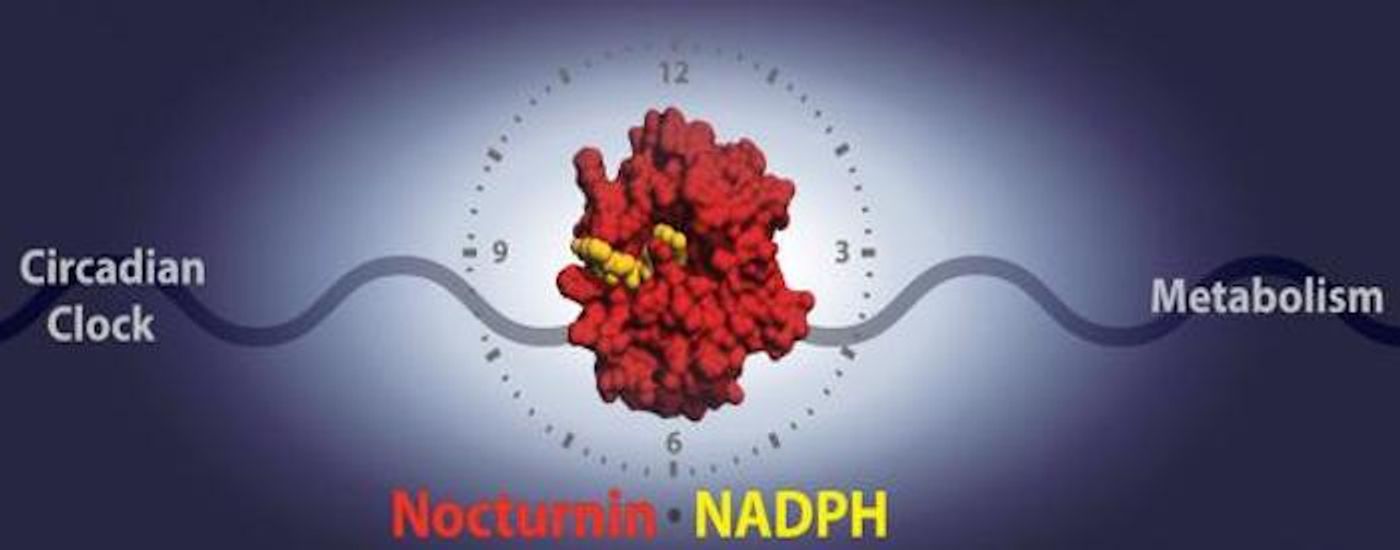The Mechanism Behind an Enzyme Linking Metabolism and the Circadian Clock
Nocturnin (circadian deadenylase) is an enzyme that has a rhythmic expression pattern; it’s required to act at different times of the day. It’s known to be an important regulator of genes that play a role in metabolism. Now Princeton University researchers have revealed that it works in a totally different way than what had been thought. The findings have been reported in Nature Communications and are outlined in the video.
"The realization that Nocturnin works in this manner will guide our thinking about sleep, oxidative stress, and metabolism, and eventually may serve as a step toward finding better treatments for metabolic diseases," said the leader of the research, Alexei Korennykh, an associate professor of molecular biology at Princeton.
Nocturnin levels are at their highest when the body awakens from sleep. Mice that lack Nocturnin are less likely to gain weight, produce less insulin, and are protected from fatty liver disease. It had been thought to regulate metabolism by destroying certain messenger RNAs (mRNAs), which code for proteins. The destruction of the mRNAs means the proteins they code for won’t be produced, and the levels of those proteins will be reduced. Work done last year indicated, however, that Nocturnin can’t degrade mRNAs.
Joshua Rabinowitz, a professor of chemistry and the Lewis-Sigler Institute for Integrative Genomics at Princeton, created ways to look for metabolites in tissue. In this work, the research team used those methods to reveal that Nocturnin controls certain metabolites that are involved in producing energy and shielding cells from damage. They found that Nocturnin hangs out in the cell’s powerhouses - the mitochondria, which suggests that Nocturnin works there.
The Nocturnin enzyme modifies two critical metabolic molecules, NADP+ and NADPH, by removing a phosphate group from each to produce NAD+ and NADH, respectively. NAD+ and NADH are essential to the function of metabolic enzymes. Reactive oxygen species (ROS) can control fat storage and metabolism, but they can also be toxic to the cell. The two molecules, NADP+ and NADPH, modulate ROS levels. This is the first enzyme known to function this way inside of mitochondria, noted the researchers.
High levels of Nocturnin might boost energy production by supplying the cell with NAD+ and NADH. "It is tempting to propose that one physiologic function of Nocturnin could be to maximize available NAD+ and NADH for energy generation in a search for food, using the elevated blood sugar that animals have at the time of awakening," Korennykh said.
The researchers took the work further and characterized human Nocturnin’s crystal structure while bound to NADPH. They also showed that in the fruit fly, Nocturnin (called Curled in this organism) cannot cleave RNA. It acts like the human Nocturnin does, solving a long-standing molecular mystery.
"Our work shows that even in the age of genomics and personalized medicine, basic biology still remains to be understood," Korennykh added. "In the example of Nocturnin and Curled, a pathway regulating some of the most important molecules in metabolism was hidden in plain sight for the past 100 years."
Sources: AAAS/Eurekalert! via Princeton University, Nature Communications









